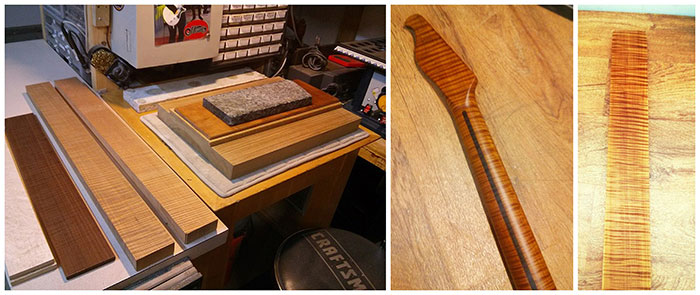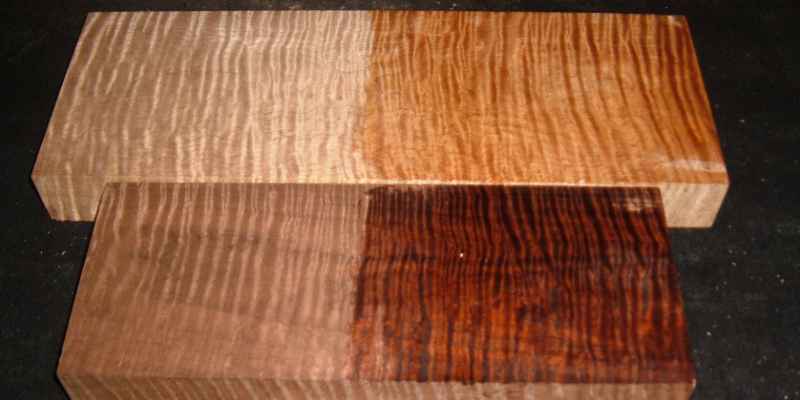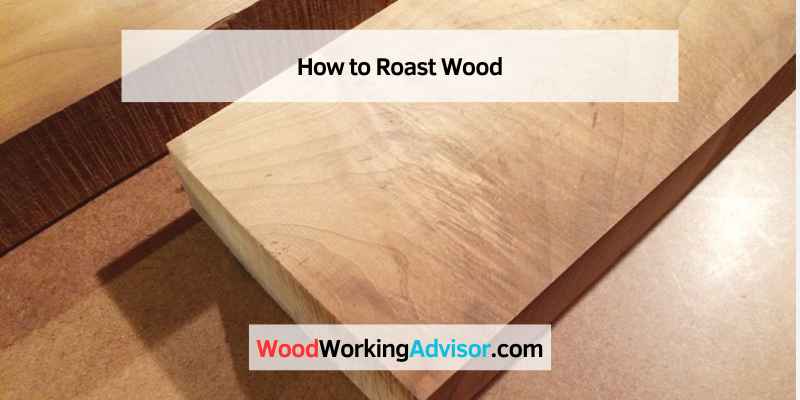Wood roasting is a method of cooking that has been used for centuries. It is a simple process that involves placing wood on an open fire and allowing the heat to cook the food. The wood imparts a smoky flavor to the food, which can be enhanced by using different types of wood.
Wood roasting has many benefits, including the fact that it is a healthy way to cook food.
Roasting Maple at Home
- Collect wood that is dry and has been seasoned for at least six months
- Avoid using green wood, as it will produce a lot of smoke and make the fire difficult to control
- Build a small fire in your roasting pit or fireplace using kindling and small logs
- Allow the fire to burn down until it is just glowing embers
- Place the larger pieces of wood on the embers, arranging them so that they are touching but not overlapping
- Allow the wood to roast for at least an hour, turning every 20 minutes or so to ensure even cooking
- Remove the roasted wood from the fire and allow it to cool before handling
- The wood should be blackened on the outside and have a deep red hue on the inside when cooked properly
Roasted Wood Guitar Body
The body is where much of the tone originates when it comes to electric guitars. The type of wood used for the body can significantly impact the instrument’s overall sound. Many guitarists prefer roasted lumber because it has a unique sonic character that helps to create a more “open” sound.
So wh”t ex”ctly is roasted wood? It’s simply wood heart’s an oxygen-free environment until it changes color. This process alters the molecular structure of the wood, making it harder and more resistant to moisture.
As a result, roasted wood is often used for high-end acoustic and electric guitars. One of the benefits of using roasted wood for an electric guitar is that it tends to produce a more “woody” tone than unroasted wood. The”s can”be es”e” e” a” helpful if you want a warm, vintage sound. Ad you’reood can help to increase sustain and clarity. Your great options are available today if you think you a roasted woo you’re body. You may want to consider brands like Fender or Gibson, which offer several models made with this type of wood.
Alternatively, check out some of the smaller boutique brands also starting to experiment with this material. Whichever route you choose, you’re sure to end up with an instrument that sounds amazing!

Credit: americansyou’retyhardwoods. com
How To Roast Maple?
Roasting maple wood is a common technique used in woodworking to bring out its natural beauty and enhance its color. Here are the steps to roast maple wood:
Materials You’ll Need:
- Maple wood (e.g., a board or block)
- Oven or kiln
- Sandpaper
- Safety gear (gloves, safety glasses, and a dust mask)
- Timer
- Moisture meter (optional)
Steps:
-
Prepare the Maple Wood:
- Start with a clean, dry piece of maple wood. You can use a board, block, or any maple item you want to roast.
-
Safety Precautions:
- Put on safety gloves, safety glasses, and a dust mask to protect yourself from any potential dust or fumes during the roasting process.
-
Preheat the Oven/Kiln:
- Preheat your oven or kiln to a low temperature, typically around 200 to 225 degrees Fahrenheit (93 to 107 degrees Celsius). Use an oven thermometer to ensure accurate temperature control.
-
Place the Wood in the Oven/Kiln:
- Place the maple wood inside the preheated oven or kiln. Ensure that there is enough space around the wood for proper air circulation.
-
Monitor the Roasting Time:
- Roasting times can vary depending on your desired result and the size of the wood. Start with a shorter time, such as 30 minutes, and check the wood’s progress. You can extend the roasting time if needed.
-
Check the Color:
- Periodically inspect the wood’s color. Roasting maple wood will darken it, giving it a richer and warmer appearance. Continue roasting until you achieve the desired color, but be cautious not to overdo it, as excessive roasting can lead to brittleness.
-
Cool Down:
- Once the wood reaches the desired color, turn off the oven or kiln and let the wood cool down gradually. This will help prevent cracks or warping due to rapid temperature changes.
-
Sand and Finish:
- After the wood has cooled, you can lightly sand the surface to remove any raised grain or imperfections. Then, apply your choice of finish (e.g., varnish, oil, or wax) to protect and enhance the wood’s appearance.
-
Optional: Measure Moisture Content:
- If you have a moisture meter, you can check the wood’s moisture content to ensure it’s at an appropriate level for your intended use.
Roasting maple wood can give it a beautiful and unique appearance, but it’s important to monitor the process carefully to achieve the desired results without damaging the wood. Adjust the roasting time and temperature as needed to get the color you want.
Hoyou’rehey Make Roasted Maple Wood?
To make roasted maple wood, you first need a piece. Maple is a hardwood, so it’s ideal for roasting. The next thing you need is a heat source.
You can use an open-first gas stove or an oven. If you’re using an open fire, ensure the flames are not too high – you don’t want to charge the you’rence your he you ready, place the maple wood on it and let contrast until I don’t brown.
This usually takes between 30 and 60 minutes. Once the wood is roasted, please remove it from the heat source and let it cool before handling it. Roasted maple wood has many uses.
It can be used as fuel for smoking meats, fish, or crafting projects. It can also be used as decor; many people enjoy the unique look of roasted wood in their homes.
How Do You Caramelize Wood?
One of the most popular questions we get asked here at The Wood Database is, “How do I caramelize wood?”. While there are several ways to achieve this unique coloring technique, we’ll focus on “two of the m”s” ” “n “et” ods: a tor”h” “and” a” chemical solution. Using a Torch:
The first method is to flame to heat the surface of the wood until it begins to change color. This can be done with a hand-held butane torch (like the one pictured below) or a simple kitchen blowtorch. If you opt for the latter, make sure that you keep the flame moving so that you don’t scorch any particular area, and always have a fire extinguisher handy, just in case.
Once your torch is lit, hold it for about 6-8dod’trface of the wood and start heating small sections at a time. Depending on your torch’s hot, you should see the color change within seconds to minutes. Keep in mind that this method will also slightly char/burn the surface of the wood, so if you want a more natural look, you may want to try one of the other methods listed below instead.
Chemical Solution: This method involves using chemicals to cause a similar reaction as above, but without actually burning/charring the surface of the wood. There are two main ways to do this: household ammonia or Rit Dye & water mixed in equal parts (we prefer Rit Dye since it’s much less smelly than ammonia).
For either method, start by cleaning off your piece of wood so that any dirt or debris doesn’t get trapped underneath d in your chosen solution until it’s saturated (but not dripping wet), and then apply it ev wood piece. You should start seeing results within minutes as long as you– it starts drying out; reapply more solution as needed.
How Do You Roast Ash Wood?
When it comes to burning wood, there are a few things you need to consider. The first is the type of wood you’re using. Different woods burn at different rates and produce different amounts of heat.
Ash is a hardwood that burns slowly and evenly, making it ideal for a fireplace or your removal. You are considering the moisture content of the wood. Wetter wood will smoke more and produce less heat than dry wood.
For best results, always use seasoned firewood cut and split for at least six months. This will give the water time to evaporate out of the wood, leaving it light, dry, and easy to burn. To roast ash wood properly, start by building a fire in your fireplace or stove using smaller pieces of kindling and firewood.
Once the flames are intense, add one or two larger pieces of ash onto the fire. Allow the logs to catch fire before adding any more; otherwise, they may smolder and produce lots of smoke but little heat. As the ashes from your logs build up, periodically scoop them out with a shovel or poker and deposit them into a metal bucket placed nearby.
This will help keep your fire burning cleanly and prevent clogging up your chimney or flue. Once your ash logs have burned down to embers, you can add more if needed.

What is Roasted Torrefied Wood?
Roasted torrefied wood is a type of wood that has been roasted at a high temperature to remove moisture and make it more resistant to rot. This process also causes the wood more lightweight and easier to work with. Torrefied wood is often used for flooring, furniture, and other applications where durability and strength are essential.
Conclusion
Assuming you would like a summary of the blog post “How to Roast Wood,” below is a synopsis of what the author covers in the center. The author begins by briefly discussing the benefits of roasting wood, such as creating a more durable and water-resistant product. He then outlines”s the “e,” o,” “q,” al,” “n,” “an” “r” in” wood,” including choosing the right type of wood, preparing it for roasting, and slowly heating it over an open flame.
The author offers helpful tips throughout the process, such as using green wood (which has higher moisture content) for quicker results or hardwood (which will take longer to roast) for a more even roast. Finally, he advises testing if the wood is properly roasted and how to store it once it has cooled.


